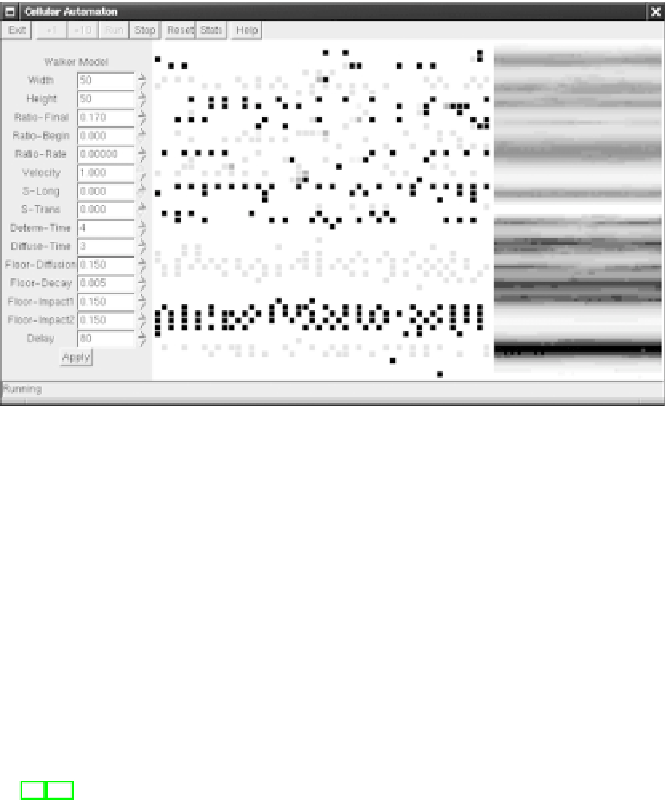Information Technology Reference
In-Depth Information
Fig. 4.
Snapshot of a simulation of counterflow along a corridor illustrating lane for-
mation. The central window is the corridor and the light and dark squares are right-
and left-moving pedestrians, respectively. In the lower part of the corridor lanes have
already formed whereas the upper part still disordered. The right part shows the floor
fields for right- and left movers in the upper half and lower half, respectively. The field
strength is indicated by the greyscale.
the latter corresponding to a spontaneous breaking of the left-right symmetry.
In a certain density regime, the lanes are metastable. Spontaneous fluctuations
can disrupt the flow in one lane causing the pedestrians to spread and interfere
with other lanes. Eventually the system can run into a jam by this mechanism.
Apart from lane formation we have also observed oscillations of the direction
of flow at doors and the formation of roundabout-like flow patterns at intersec-
tions [11,13]. Therefore the model captures - despite its simplicity - the main
phenomena correctly which is important for practical applications, e.g. evacua-
tion simulations or the optimization of escape routes.
3.2
Influence of the Floor Fields
In order to elucidate the influence of the coupling parameters
k
S
and
k
D
we
investigated an evacuation process in a simple geometry, namely a large room
of
L×L
cells with one door [14]. In the simulations,
N
particles are distributed
randomly in the beginning, corresponding to a density
ρ
=
N/L
2
. All informa-
tion about the location of the exits is obtained from the floor fields. The field
values of the static floor field
S
increase in the direction of the door and are de-
termined by some distance metric [14]. Fig. 5 shows a complex structure and the
corresponding static floor field. The field strength is proportional to the distance
to the nearest exit measured using a Manhattan metric.



